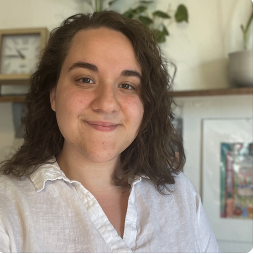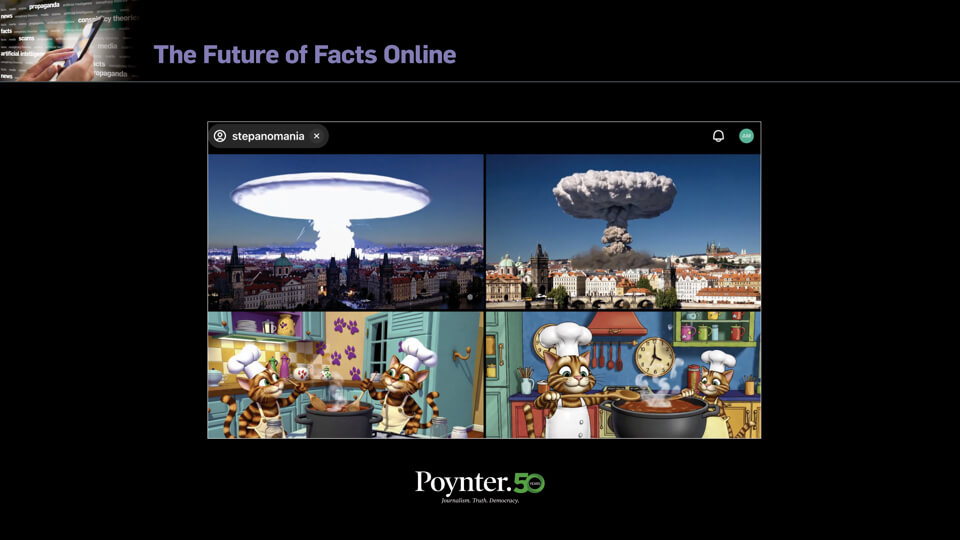You have the best job at The Washington Post.
That’s what readers sometimes email Sydney Page and Cathy Free, the full-time writers for the Post’s Inspired Life section, which documents human moments and acts of kindness. Along with editor Allison Klein, the team scours the internet for viral feel-good stories they can expand upon for the Post’s readership.
The stories they cover can be both touching and outrageous, like a story on a beloved emotional support alligator. Klein said an Inspired Life story has to be heartwarming and surprising.
“There’s a million heartwarming things that go on in the world that we’re not going to write about because they’re just not that interesting,” she said.
The readers, for their part, are responding well to that mission: Inspired Life stories are regularly some of the top-read articles on the site, Klein said. But it’s about more than metrics.
“Success is also when your neighbor comes over and says, ‘that was a great story,’” said Free, a longtime features writer who would sneak off the police beat at The Salt Lake Tribune to interview interesting people.
A lot of the stories in Inspired Life that are sourced through social media have already been told, to some extent, via viral TikTok explainers or local television news segments. Page and Free say the key to making these stories their own for the Post is to spend more time with them: asking questions no one else asked, gathering more voices, following an update, letting interviews run long and digging into conversations.
Inspired Life also stands out from competing “inspirational” content by not being overly cutesy, relying on the foundation of that reporting to tell the story as it is.
“It’s the same approach as any other journalism in the sense that you’re really not there to comment on something. You’re just highlighting what actually happened,” said Page, who worked at Canadian national news network CTV before joining the Post as an Inspired Life writer in 2020.
Outside of expanding on viral moments, a big part of the section is telling quiet stories that otherwise might not make headlines.
“A lot of these people, they never anticipated being in The Washington Post when they woke up that day,” Free said. “I think they make the best stories when they haven’t had a lot of attention and they’re ready to tell that story, and they haven’t really told it that often. You feel honored in a way to be the one to tell it.”
Klein, a former police beat reporter for the Post who originally joined the section as a writer, said the hard news that populates most of The Washington Post is critical, but can get hard to read.
“We have two wars and climate disasters and mass shootings and it gets to be a lot. I think what we do is show people everything is not terrible out there,” she said. “There’s a lot of bad stuff out there, but here’s a little bright spot. of something that actually happened, that is true, and it’ll make you feel not terrible about your day.”
Disaster coverage highlights how this reporting fits into the Post’s larger news product. The first day a hurricane hits, people want straight information on casualties and the impact of the storm. But on the second or third day, Klein said, people want survival stories and uplifting moments.
When going that route feels wrong, the team instead does what they call “counterprogramming,” running evergreen stories as a palate cleanser for the hard news product. But it goes beyond just balancing out bad things, Page said.
“You want to have a holistic picture of the world,” Page said. “Obviously there’s a lot of terrible things going on in the world, but there are good things. And if we just ignore all of those things, then we’re doing a disservice to our readers.”
Read Inspired Life’s favorite stories
Poynter asked the Inspired Life team to share some of their favorite stories from the section. Here are five of their picks.
- You’re stressed. Take a break and look at this tiny chipmunk restaurant. “Cathy wrote a story about this woman who made this little tiny chipmunk restaurant in her backyard and it was like, the cutest thing,” Klein said. “I was trying to figure out, what, how and when are we going to run this story? Because you have to figure out the right time to run it. Then the 2020 election came up and everyone was so tense that day, so we published it that day.”
- Tiny dolls appeared in mailbox with a note: ‘We’ve decided to live here’ “This mystery went on and on,” Free said of the sudden appearance of a family of dolls in the mailbox of Michigan resident Don Powell. “I love talking to him. He was a hoot. And he never figured out who it was.”
- This Polish city’s top tourist attraction? A stray cat. “Animal stories are really popular with people, and I love doing them,” Free said. “They always brighten everyone’s morning to read something like that.”
- The Nazis took a precious kettle from a Jewish couple. Some 86 years later, their grandson in Maryland got it back. “I just remember it being like a very emotional, powerful thing to write,” Page said. “I love that one.”
- Three women discovered they were dating the same man. They dumped him and went on a months-long road trip together. “All I knew was I had a first name,” Free said about tracking down the erstwhile boyfriend to confirm the women’s stories. “I knew he had worked at a bike shop in Boise. And so I call all the bike shops in Boise, and I caught a guy just as he was going home for the day, and he spilled his whole name and said, ‘I’ll have him call you.’ I didn’t think I’d hear from him, but he called and he gave me a quote. And he’s like, ‘Well, I didn’t like any of them.’”







